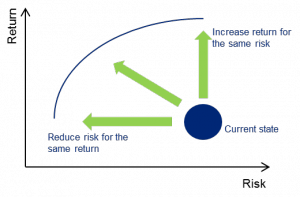Increasingly organisations outside of financial services are looking to model, quantify and manage risks ranging from their operational, political, environmental/weather and compliance exposures through to strategic risks.
The benefits of taking such a quantitative approach to managing these risks include: making objective cost-benefit evaluations of risk mitigation options, assessing the likelihood of achieving budgets or plans, and improving “risk-adjusted” views of return on investment (ROI).
Duncan Zorn
Actuaries love nothing better than to turn complex problems like these into a model using their mathematical skills. A risk model is a mathematical representation of a system or process, based on probability distributions of the underlying risk drivers.
Historical data, as well as the views of risk experts, are used to parameterise the model and the risk distributions. The rise of “big data” has made relevant risk data increasingly available for risk modelling purposes. When it comes to some low frequency risks for which data are difficult to find, the views of experts are used to compensate for the lack of data.
Actuarial risk modelling skills are being used across businesses for:
Forecasting and planning. Many companies traditionally do their forecasting and planning by aggregating a series of single point estimates for the drivers of the forecast, with little allowance for the inherent uncertainty of the drivers. Some companies apply a safety margin in their estimates, or conduct single factor sensitivity tests. However, as risks often occur in combination, ie, they are correlated, single factor sensitivity tests are insufficient, and also give no indication of the likelihood of different outcomes.
Risk-adjusted forecasting models show a wide range of forecast outcomes and their associated probabilities. These forecasts incorporate multi-variate risk modelling and stochastically simulate many potential outcomes based on the distributions of the underlying drivers of the particular key performance indicator.
The benefits of such a risk-adjusted approach include;
-
- Improved management understanding of the range of potential outcomes and their associated likelihood;
- Quantifiable evaluation of risk exposure contribution of each risk driver and of associated management actions;
- Quantification of risk drivers to support the creation of risk mitigation strategies. Decisions to avoid, mitigate or transfer the most material risks can be based on quantifiable cost-benefit ratios.
Investment decision making. Often we hear how projects or investments have failed because of some “unexpected scenario”, but in many cases this could have been avoided by a more thorough analytical evaluation at the outset.
To ensure optimal decisions companies should evaluate the merits of their capital investments by plotting the expected return/value against the volatility/risk of that value. This was an idea originally developed by Harry Markowitz in relation to financial asset selection in his 1952 publication on modern portfolio theory. Although advancements in behavioural economics in recent years have challenged many of the basic assumptions underlying Markowitz’s paper in relation to financial asset selection, the fundamental concept is still widely used and can be applied to investment decisions of many kinds.
Figure 1 – Growing shareholder value in the risk-return space
Employing such an approach means that companies should consider a risk-adjusted return on any investment, and not just the expected return. This approach not only gives a board of directors greater assurance in the decision making process, but also allows their risk preferences (or appetite) to be incorporated into the decision.
Both upside and downside potential and the attaching probability ranges should be calculated. In practice, this means using multi-variate risk models to assess investment or project value.
Quantification of not only the additional expected return of an investment or project, but also the additional exposure, is now becoming embedded in the risk management approach of many companies.
Risk hedging and contingency planning. Almost every company hedges risk of some sort through insurance or other financial technique. Increasingly actuaries support hedging and contingency decisions within the core business, and also outside of the insurance analysis.
In some industries, hedging for purchases of raw materials and commodities is already widespread. In other industries the practice is still emerging, however it is increasingly understood that optimising risk-return in purchasing requires an integrated view of earnings at risk under different hedge positions.
The techniques discussed in this article are not only relevant to the management of financial or commodity hedging instruments, but can be applied to the cost-benefit evaluation of any hedge or contingency.
In simple terms, the quantifiable benefit of a risk mitigation tool or process may be zero in a single ‘best-estimate’ scenario, although the cost of the mitigation is usually not. The benefit of mitigation only kicks-in when adverse events occur, so in order to evaluate the cost-benefit we must model the scenarios and associated probabilities in which these adverse events occur.
For a longer version of this paper, see the FERMA website at: https://www.ferma.eu/expert-views-its-not-just-insurance-actuaries-can-help-risk-managers-in-any-industry/
Duncan Zorn is a Fellow of the Institute and Faculty of Actuaries. DZorn@Deloitte.ch

